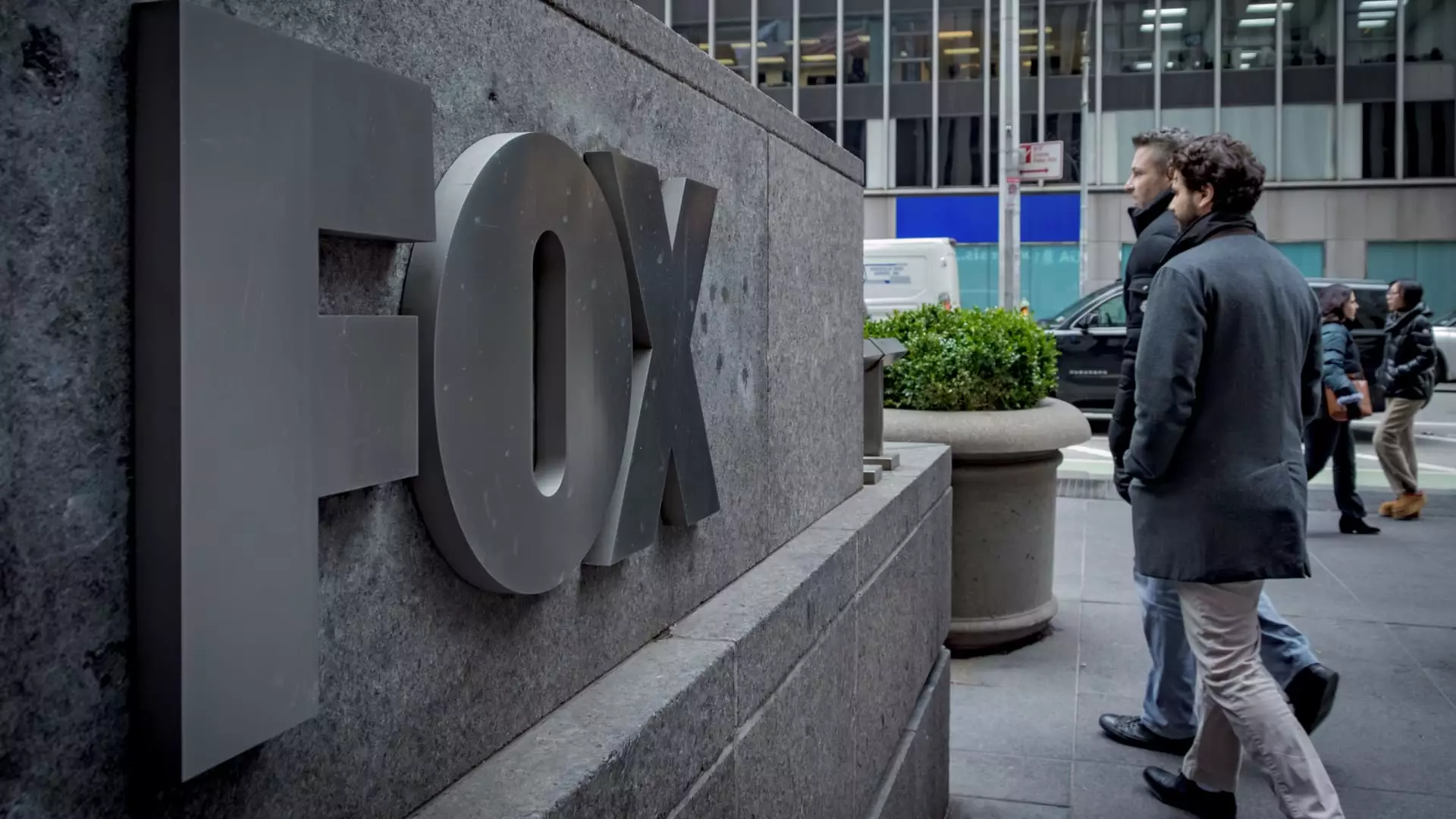As the landscape of broadcast media continues to evolve at breakneck speed, Fox Corporation has bravely announced its foray into the streaming universe with the upcoming launch of Fox One. This venture aims to address the growing competition stemming from other media giants, yet it carries both promise and peril. CEO Lachlan Murdoch’s unveiling of this service during a quarterly earnings call not only highlights Fox’s ambition to capture the direct-to-consumer market but also raises questions about the sustainability of their traditional cable model, which seems increasingly dated in a world where streaming continues its relentless ascent.
Murdoch’s words during the call invoke a kind of defensive optimism. His assurances around pricing aligning with “wholesale pricing” suggest a keen understanding of the need for competitive positioning against established streaming platforms. However, beneath the surface, this strategy lays bare a corporate reluctance to fully commit to the disruption that the streaming model signifies. By stating that they do not want to lose traditional cable subscribers to Fox One, Murdoch reveals a fear that could confine the new service to the same fate as other faltering cable networks. Is Fox stuck in a paradox, where innovation is stifled by the very thing it aims to replace?
The Tug-of-War Between Legacy and Innovation
The underlying narrative of Fox’s streaming venture is not just about launching a new service but is also about a desperate attempt to maintain relevance in an industry that has drastically shifted. While Murdoch touted the company’s 27% increase in quarterly revenue driven by the Super Bowl and successful ad campaigns, this is a bittersweet victory; it reflects the power of live sports but also highlights the necessity of such events to sustain income. As the entertainment ecosystem transitions, advertisers and consumers are both becoming increasingly savvy, leading to questions about how much longer the advertising-heavy model can sustain itself without alienating a younger demographic seeking authenticity in content engagement.
Moreover, Murdoch’s admission that Fox is taking all measures “humanly possible” to retain traditional cable subscribers indicates a constrained vision that confines Fox One within a box of conventional wisdom. In pursuing a model that prioritizes the existing subscriber base, Fox risks alienating those who embrace the streaming revolution–a demographic that shuns traditional cable for its perceived antiquity and impracticality. Will Fox One be a mere extension of cable service or something uniquely tailored to the preferences of a new generation?
Seeking Collaborations Without a Clear Vision
The announcement that Fox is exploring bundling with other streamers does present a possibility of innovation through partnership. This approach echoes the current industry trend toward synergy, where collaboration can yield a more robust offering for users. Nevertheless, the scattered strategy depicted raises alarms about the coherence of Fox’s vision. Without a differentiating factor that speaks directly to viewers who have turned away from cable, Fox One could blend into a cacophony of indistinct streaming offerings, failing to establish its unique brand identity.
Furthermore, Fox’s hesitance to operate independently from the cable model exemplifies a broader issue in the media landscape: the struggle to define what it means to be “streaming.” As companies like Disney and Warner Bros. embrace a direct and dynamic approach, the pivot by Fox may prove too little too late. The unresolved tension between legacy operations and innovative aspirations is palpable, and the clock is ticking for Fox to find its footing before it’s too far gone.
The Impending Reality Check
As anticipation builds for the launch of Fox One, the question remains: will this venture emerge as a game-changer in the streaming world or will it simply serve as a fleeting band-aid on an industry in flux? The imperative for Fox goes beyond simply launching another streaming platform; it must fundamentally rethink how it engages with consumers and adapts to their evolving expectations. The strategic axis needs to shift from simply trying to retain, to genuinely attracting and nurturing a new viewer base. If not, Fox One risks becoming yet another footnote in the dismal legacy of companies that failed to innovate in time.
Amid a display of data reflecting Fox’s current strengths, the unaddressed vulnerabilities loom large. A clash between the old-world values of cable television and the immediate desires of a tech-savvy, content-hungry populace creates fertile ground for Fox to either flourish or flounder. In this era fraught with disruption, the path Fox chooses may well determine its fate in the cutthroat world of entertainment.

Leave a Reply